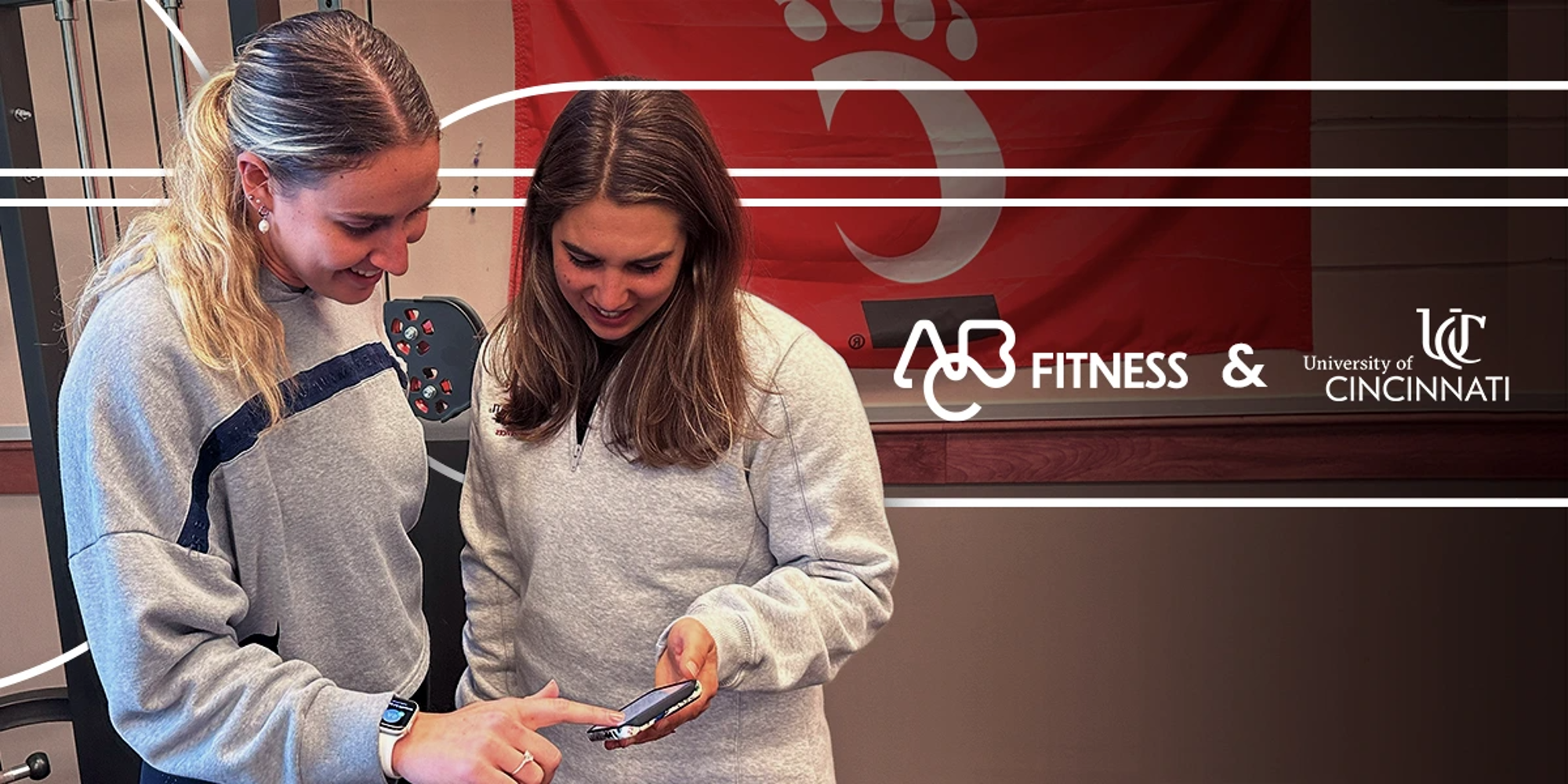Tech
Apple’s ‘It’s Glowtime’ Special Event Put An Appreciably Vivid Glow On Accessibility

I hung out with my friend and YouTuber iJustine in the hands-on area.
I made the trek down to the South Bay this week, traveling to Cupertino to cove Apple’s annual September event from the Steve Jobs Theater at its Apple Park headquarters. It’s an event—and a venue—I know extremely well, but each one is different and has different applicability to accessibility. Monday’s festivities were no different, as every new product Apple announced had pertinence to the disability community.
Before I share my analysis, a disclaimer here provides important context. Although I spent a good amount of time roaming around the hands-on area following the (pre-recorded) presentation, I have neither an iPhone 16 nor an Apple Watch Series 10 presently in my possession. Thus, to the extent I’ve seen and held these forthcoming devices, it wasn’t nearly long enough to concretely form distinct impressions on their worthiness.
As we journalists are oft to write on social media, more TK (to come).
iPhone 16 and 16 Pro
As I watched the iPhone portion of the video, which came last, I kept thinking back to 6 years ago when, in 2018, my heart helped me choose the iPhone XR largely because of its blue color. It also helped that, in technical terms, the XR was a nigh equal peer to the top-of-the-line XS model. Same design. Same processor. Same software. In other words, I didn’t sacrifice much by opting for ostensibly the “lesser” of two iPhones.
My mind was persistently made up while sitting in the audience that I’d choose the regular iPhone 16 because of the blue model, which Apple officially calls Ultramarine. In the video, the blue looked wonderful—extremely bold, unlike the washed-out tones of the iPhone 15—so I was surprised (and a bit crestfallen) to discover I didn’t like the blue after seeing it in the hands-on area. Steve Jobs Theater is impeccably lit, but it turns out the Ultramarine has a decidedly purplish hue to it in certain lighting. Purple isn’t my thing, so I likely will continue my years-long streak with the Pro variant. The point of my anecdote about the XR is simply to illustrate how great it is that both iPhone 16 models by and large reach feature parity. Of course Apple would prefer people spend more money, but the regular 16 compels even amongst the nerd set.
As to the 16 Pro, my low vision can’t discern a difference between the reduced bezels on the Pro versus the regular phone. Both look razor-thin to my eyes, but the larger displays (6.3” and 6.9”, respectively) are welcome. As is my wont, I’m a devout Pro Max user despite its aircraft carrier size because big screens are better for my visual tolerances.
Camera Control
The Camera Control button, available on both iPhone 16 models, lives below the side button on the right side of the phone. It reminds me of the Smart Battery Case of yore, which had a shortcut button for launching the camera. At a stratospheric level, Camera Control is exactly like that except, to borrow a phrase from Ina Garten, Apple turned up the volume on the concept. Like the last few Home Buttons with Touch ID, Camera Control isn’t a mechanical button; rather, it’s capacitive and responds to pressure. What makes Camera Control interesting from an accessibility perspective is twofold. For one thing, launching the camera is much nicer than swiping left on the Lock Screen, which is something I did often. Rather than having to look at my phone and swipe, which involve visual and motor skills to orient myself, pressing the Camera Control is much less taxing—and faster for capturing fleeting moments.
I had difficulty in the hands-on area negotiating the various presses, as well doing the slide gesture for cycling through the camera menu. To accommodate for such issues, my understanding is there’s an accessibility setting on the new iPhones that allows users to adjust the button’s sensitivity. I’ll use it once I have the phones for testing.
Apple Watch Series 10
The new Apple Watch is my favorite new product of the event. I’ve been an ardent Apple Watch Ultra wearer since the original debuted in 2022, having skipped the Ultra 2 last year because there wasn’t meaningful changes. The choice to use the Ultra is the same reason I choose the iPhone Max: its big screen, fully aware of the Faustian bargain regarding girth and weight. That bargain is no longer necessary with Series 10, as Apple boasted its screen is slightly larger than the Ultra’s. Series 10 is markedly thinner than not only last year’s Series 9 but obviously the Ultra. I’ve enjoyed the Ultra, but look forward to returning to wearing a regular model. Between the reduced weight and increased screen size of Apple Watch Series 10, I happily get to have my cake and eat it too.
Another marquee feature of Apple Watch Series 10 is sleep apnea detection. I’ve covered the condition before, and am interested in seeing how Apple’s detection technology works. The company noted in the presentation that 80% of people have the condition and don’t know it.
A side note on the titanium Milanese Loop for the Ultra. I got to play with one in the hands-on area, and it’s a no-go for me. It’s really hard to unfasten and re-fasten the band with my less-than-optimal fine-motor skills, so I don’t foresee myself ever using it for accessibility reasons.
AirPods
From an accessibility point of view, the standout feature is Apple’s planned future software update to effectively transform the earbuds into over-the-counter hearing aids. This is a topic I’ve covered extensively, which includes interviews with executives at Starkey and Soundly as well as audiologists, and is a watershed moment for those with hearing disabilities. There are notable technical details to Apple’s implementation—users take scientifically certified hearing tests from their iPhone, etc—but the biggest boon is the social component. To wit, there is an extreme stigma associated with wearing prescription hearing aids because to lose hearing is a signifier of aging and traditional prescription hearing aids are boring beige boxes that aren’t bastions of fashion. By contrast, virtually everyone has AirPods of some surname. They’re the iPods’ white headphones for this generation. Thus, that Apple is adding hearing aid functionality to AirPods means the stigma is obliterated. Granted, it remains to be seen how effective Apple’s software is in practice, not to mention it’s very true certain people will be better off with a prescription hearing aid depending on their situation.
Nevertheless, AirPods Pro with the hearing aid feature could well be a Trojan horse for a not-insignificant number of people, young and old, to embrace hearing aids as a way to confront their hearing health. At a high level, Apple’s embrace of health-oriented features—spurred largely by Apple Watch—in AirPods stands in stark contrast to the olden days when, as I scooped for TechCrunch in 2018, Apple was adamant that AirPods aren’t intended to be hearing aids. That’s still mostly true insofar as the majority of people are going to use AirPods as passive listening devices for music and podcasts. The salient point here is simply that Monday’s news about AirPods Pro becoming hearing aids is an extremely significant development. It’s going to help a lot of people.
Finally, a cursory note on AirPods Max. My partner gifted me a pair of the blue ones a few years ago, and I use them all the time when working at my desk. Its Lightning port bothers me not one bit, as I keep a USB-C to Lightning cable permanently attached to my iMac for charging various accessories like AirPods Max and my beloved MagSafe Battery Pack.
Miscellany
I’ve seen some armchair pundits bemoan on social media about the regular iPhone 16 still using a 60Hz display in 2024. That’s their prerogative, but it’s important to have some perspective. As one person, I’m not philosophically opposed to high refresh rate displays; I’m all for technological progress. What I am opposed to, however, is this notion that 120Hz (or higher) is table stakes. That’s just flatly untrue; maybe if you’re a tech YouTuber or a gadget reviewer with impeccable eyesight, you care. But it’s important to bear in mind that not everyone can see the smoother scrolling of the 16 Pro to the regular 16—and “can’t see” is worlds different from “don’t notice.” At an intellectual level, I understand ProMotion exists on my iPhone and it’s a good thing to know. In practice? I literally cannot discern any tangible benefit to the point it may as well not exist if I already didn’t know Apple put it there. I’ll concede Apple probably will need to move ProMotion downstream sooner than later in the name of progress. But it is absolutely not a travesty that iPhone 16 ships next week with a pedestrian 60Hz display.
Likewise, concerning USB-C, the nerd clamor for One Cable To Charge Them All is somewhat overwrought. The premise is sound—sure, one cable to charge every device would be nice and accessibility unto itself—but the problem is these cables are not easy to use if you, like me, have lackluster hand-eye coordination. Fatalistic though it sounds, what good is USB-C if you struggle to plug it in? Not everyone has the visual and fine-motor acuities to negotiate things, but the mainstream tech community doesn’t bother to consider that. True innovation isn’t USB-C on all the things. True innovation would be making the actual standard more accessible. As an Apple user, I, for one, would love to see Apple somehow fuse MagSafe with USB-C for its ecosystem. I couldn’t care less about industry-wide standardization because, again, what good is having one cable for everything if you can’t easily use it for everything?








